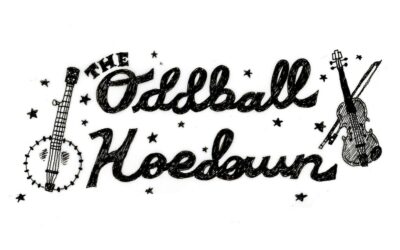In a new book by Mark Athitakis, the Midwest is not what we think it is, and, more crucially, neither are the stories spun of it.
The Midwest (or the country’s idea of it) momentarily holds a place in the national spotlight for its role in the 2016 election — real, misunderstood or otherwise. And with this, the effort to better define the region has taken on a deeper significance, to better place its boundaries both physical and cultural. While relegating itself to the fiction of the Midwest, The New Midwest, out February 2017 from Belt Publishing, is both a study in the literary art of the region and an oppositional force in the dialogue that surrounds the Midwest at large.
As Athitakis writes in the introductory pages, “Hard work is not necessarily redemptive. Love isn’t always submission. Nor is churchgoing. Immigrants aren’t universally noble, hardscrabble souls. Detroit is neither a gleaming tribute to America’s industrial might, nor a symbol of the country’s ruination. (The Midwest) is, in short, a more complicated and questioning setting than it’s been given credit for.”
Indeed, the project in this short volume is to re-envision contemporary Midwestern literature for the eyes of the collective country. Too easy are the assumptions of homeyness, diligence, ethic and faith, and too white are the critical narratives spun around the work of the region’s many writers who, in actuality, have challenged regional status quo and sought to illuminate difficult aspects of race and class.
In nine subject-headed chapters such as “Hard Work and Other Lies of the Heartland,” Athitakis draws from a deep well of contemporary authors — Stuart Dybek, Marilynne Robinson, Jane Smiley, Celeste Ng, Aleksander Hemon and dozens more — as examples of writers whose ongoing work illustrates the many ways in which easy expectations of the Midwest are being actively subverted.
Athitakis’ selections are sharp, and his close-readings succinct, and his wrangling of these many works and many subjects into conversation is as necessary as it is daunting. The book does its best work when Athitakis engages and counters the myth-making done not just by writers themselves but by critics and other tastemakers looking from the outside in. Take the chapter “Is This Heaven?” where he explores Marilynne Robinson’s Iowa-set trilogy, Gilead,Home and Lila through the calm, religious frameworks built by reviewers like James Wood in The New Yorker, who praised the novels’ colloquialisms and its secular “profundities in humble dress.”
“For many critics,” writes Athitakis, “lauding the supposed plain-spokenness of her prose — or her religiosity — often is a way to elide her darker thematic concerns.”
In a New York Times review, Diane Johnson references Robinson’s “wonderful feel for Midwestern life,” and another reviewer describes Robinson’s work, “peopled by humble characters, centered on family, driven by hope.”
All of which might well be fair and true, but Athitakis sees a need to push further. “Such assessments give short shrift to a set of novels that place the Civil Rights Movement, poverty, violence, prostitution, troubled faith, and failure at their center,” he writes. “That these elements are understated when Robinson’s novels are discussed speaks to which elements of her novels critics choose to celebrate.”
It’s a terrific challenge to manage this many critics and writers — and multiple books by each — in so short a space, and the effort is valiant. The very limited size of The New Midwest (92 pages), however, allows too few encounters like this parry and riposte. The conflict between the fiction and the narratives built around the fiction can be taken for granted or swept over at times, standing on the foundations of Athitakis’ literary summaries — sharp as they may be — more often than on explicit example.
The risk is that some passages can feel as though they’re punching blind, swinging at an opponent who has already slipped out of the ring, or isn’t quite in it to begin with. In other words, there are moments when we simply have to take Athitakis’ word for it.
The concrete examples Athitakis provides do often mitigate this sensation, fortunately, and are powerful enough in their own right to loom over the text in useful ways. Early in the book, Athitakis makes note of a baseball announcer, Joe Buck, offering a demographic sketch of a Southside Chicago neighborhood that’s celebrating the White Sox in the World Series. Buck mentions policemen, firefighters and stockyard workers. The problem was that when this game took place in 2005, the last operational stockyard had been closed for three decades.
“There was no reason why facts should get in the way of a good story on the verge of the White Sox’s triumph, though,” Athitakis writes. “Whether Buck studied his history or not, he was embracing a mythology…he was romanticizing (an industry) so closely tied to the city’s fabric that its decades-long nonexistence in October 2005 hardly mattered.”
The anecdote works because Athitakis takes the time and page space to bring it into conversation with the work of Carl Sandburg and with Upton Sinclair, dipping in and out of the literary to establish both the myth-making and myth-destabilizing effects in literature and popular conscious.
This segment also points at another a recurring notion Athitakis hits on: that the wider American conception of the “Midwest” serves a national form of nostalgia and identification — what he calls our “the long-rutted narrative pathways.” Everyone’s got family back in the Midwest, some connection to cow country or the rust belt that gives credence to their generalities and romanticisms. The stereotypes of value systems and lifestyle cloy across time and space because those assumptions are comforting and familiar.
It is these broad-stroke assumptions that are responsible for defining what and where the Midwest is, Athitakis asserts, rather than physical geography and the more honest, more complex realities themselves.
“The pattern is clear. The borders of the Midwest morph over time to define it as homey, religious, self-reliant, and white as possible. And the collective conception of Midwestern fiction has persistently matched those borders.”
The result is a Midwest that is a shape-shifting cluster of states in the American imagination. The region’s literary becomes alitmus test for its cultural identity, and through its stories, Athitakis endeavors to reassess and re-contextualize this fictional plane.
At one point in the book, recommending Leon Forrest’s Divine Days as a contender for The Great American/Midwestern Novel, Athitakis puts it like this:
“Religious but profane, hustling yet community-minded, informed by the past but eager to be free of class, muscular but compassionate. In Midwestern literature above all, this breadth of contradictions serve as a retort—proofs that the region hasn’t locked into a set form, has never locked into a set form, pushes back, experiments, defies expectations.”
As Athitakis himself notes, this is not a conversation to be ended, to be finalized and done with; he is writing in order to further a discussion. In so many words, he is saying, here are some things people get wrong about the Midwest and its fiction, and here are some books that better reflect the reality of the region.
While The New Midwest is not a comprehensive book, it is a manifold boon to any interested party’s reading list. At its best, the book is an illustrative and auxiliary text to anyone seeking a better comprehension of the Midwest, its history, the ongoing cultural discourses surrounding it and, of course, the discourse surrounding the stories the region tells and the stories we tell about it.



